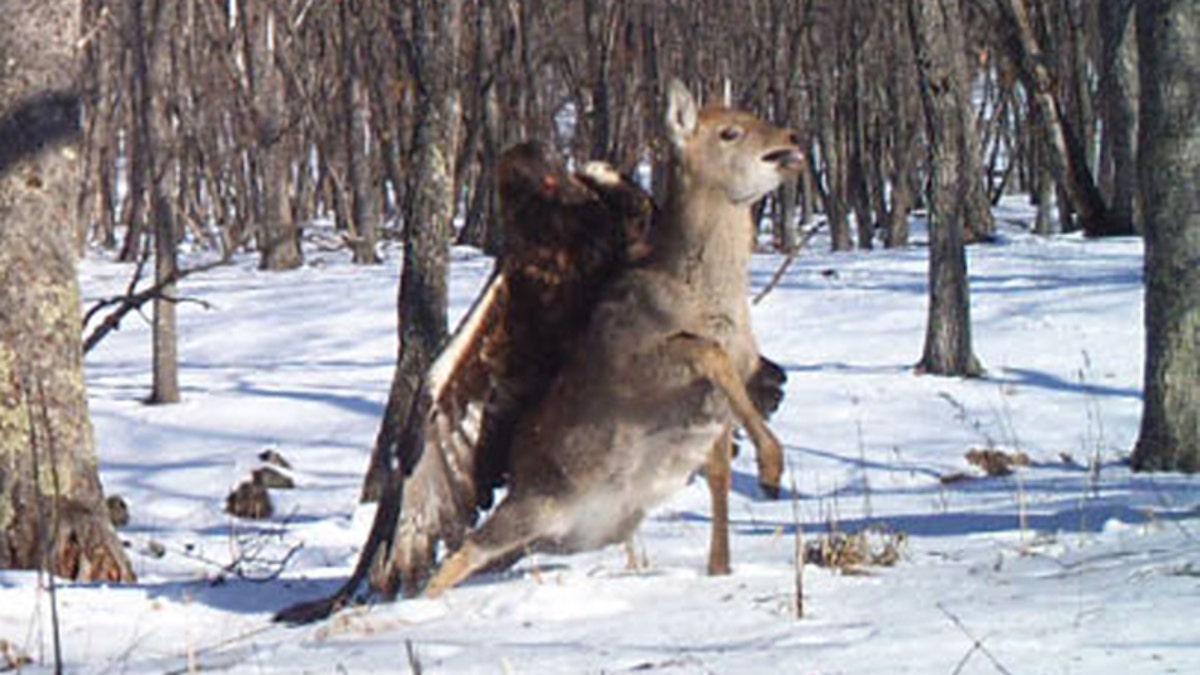
(Linda Kerley, Zoological Society of London (ZSL))
A seemingly unlikely battle between a golden eagle and a baby deer was photographed by a camera trap set up to capture poachers seeking Russia’s endangered tigers.
The three images captured by the camera cover a 2-second period, and show an adult golden eagle clinging to the deer's back. Its carcass was found two weeks later, just a few yards from the camera, initially puzzling researchers.
[pullquote]
The paper and images appear in the September issue of the Journal of Raptor Research. Authors include Linda Kerley of the Zoological Society of London and Jonathan Slaght of the Wildlife Conservation Society.
"I saw the deer carcass first as I approached the trap on a routine check to switch out memory cards and change batteries, but something felt wrong about it. There were no large carnivore tracks in the snow, and it looked like the deer had been running and then just stopped and died." said lead author Kerley, who runs the camera trap project. "It was only after we got back to camp that I checked the images from the camera and pieced everything together. I couldn't believe what I was seeing."
Slaght noted that golden eagles have a long history of eyebrow-raising predation attempts.
"The scientific literature is full of references to golden eagle attacks on different animals from around the world, from things as small as rabbits—their regular prey—to coyote and deer, and even one record in 2004 of an eagle taking a brown bear cub."
Researchers from the Zoological Society have been using camera traps for six years to monitor Amur tigers in the Lazovskii State Nature Reserve in Primorye in the southern Russian Far East. The images from these traps usually record common prey species, and occasionally a resident or transient tiger—information important to understanding tiger population structure.
The scientists underscore that golden eagles do not regularly attack deer, and there is no evidence that such attacks have any impact on deer populations.
"I've been assessing deer causes of death in Russia for 18 years—this is the first time I've seen anything like this," Kerley said.
